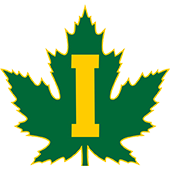Resource - Ms. Gilewicz
December 16, 2024
More Common Strategies Used In Teaching and Learning Math
· Bridging to Ten: A strategy which uses "ten" as a benchmark number to assist in partitioning numbers and solving tasks. For example, when solving 7+8, children think, "I need two with eight to make ten so I can break up seven into five and two and the equation becomes 5+10."
Extend to target decades, centuries and common benchmark numbers.
· Count Back: A counting strategy most commonly used to solve "removed items" tasks. For example when solving 12-8, children begin at twelve and count back eight counts to arrive at four. This is sometimes referred to as count-back from or
count-down-from.
· Count Back To: A counting strategy most commonly used to solve missing addend tasks of hidden collections. For example, when solving 12-8, children begin at twelve and count back to eight keeping track of the four counts. This is the more efficient subtraction strategy. This strategy is also referred to as count-down-to.
· Count On: A counting strategy used to solve additive tasks involving hidden
collections. For example, 8 + 4 is solved by counting up four from eight to arrive at twelve. This strategy becomes less efficient if counting on larger sets such as 8, 9 or 10 and should be encouraged to use more expedient strategies. A count on child can hold the first set in their head.
· Count Up To: A counting strategy used to solve missing addend tasks or
subtractive tasks. For example, 8+ __ = 12 or 12–8 , is solved by counting from eight up to twelve, and keeping track of the four counts. This is also referred to as the "think addition" strategy which involves the understanding of the inverse
relationship for addition and subtraction.
· Compensation: A strategy used by children to adapt the numbers they are
working with to make them more friendly. It is most often used when working with numbers that end in the digits eight or nine. For example, to solve 26 + 38,
children take two from 26 to make the equation 24 + 40.
Comprehension Questions
Here are questions that you can use while reading at home with your child to deepen their understanding of the text you are reading with them.
Thinking Within the Text
u What was the problem in the story? What did _____ do to solve the problem?
u What happened in the story? How did the story end?
u Explain what you learned in this book. What did you learn about ____?
u What were some important facts about ____ in this book?
u What information did you learn from the (chart, map, label, graph, photo, drawing,
glossary)? What kind of information does it give you?
Thinking Beyond the Text
u Tell me some ways ___and ___ are alike/different.
u Tell me how ____ felt when ___. Why?
u Why is ___ important?
u How does ____ change? What does ___ learn?
u How do you think ____ felt when (or about) _____?
u Why do you think _____? Can you give an example from the book?
u Make a prediction about ____. How do you know something is going to happen here?
u What dos the writer say that makes you think that?
u What is a question you still have about ____?
u What lesson did ____ learn?
u What was the value of ____ to _____?
Thinking About the Text
Is this a good title for this story? Why (not)?
What makes the title, ____ a good one for this book?
What did ____ learn? How do you know this?
Why do you think the writer said ____?
What did the writer mean by ______?
Show the sections of the book and tell the kind of information in each section.
How does the heading help you read the book?
How did the writer help you understand _____?
How did the writer make this book interesting?
Look at the way the writer began the book. What did the writer do to get you interested in the topic?
What side do you think the writer is on? Why?
What is the significance of___?
Why do you think the writer wrote this book in 1st (or 3rd) person?
What genre did the writer use? What makes you think that?
Look at the way the writer ended the book. Do you think this is a good way to end? Why or why not?
Give an example of a description the writer used to show what ____ was like.
What was the most important part of the story and why?
Find the part in the story where _____.
What did the writer mean when s/he said _____?
What was the writer’s message?
The writer used specific words/phrases to describe _____. Can you give examples?
How did the writer let you know that something exciting was going to happen (foreshadowing)? Find examples from the text.
Look back at the text and find some powerful descriptive words. Explain what they mean.


